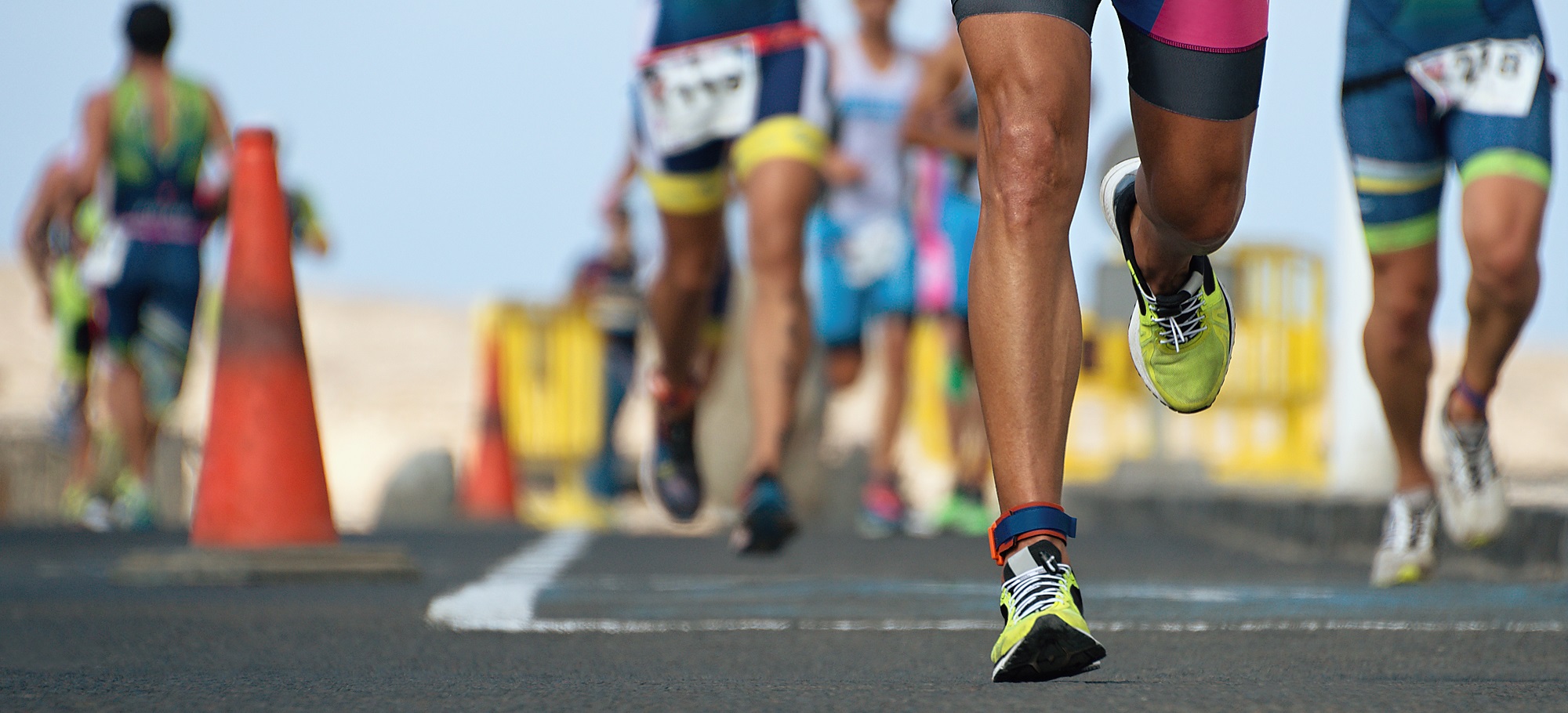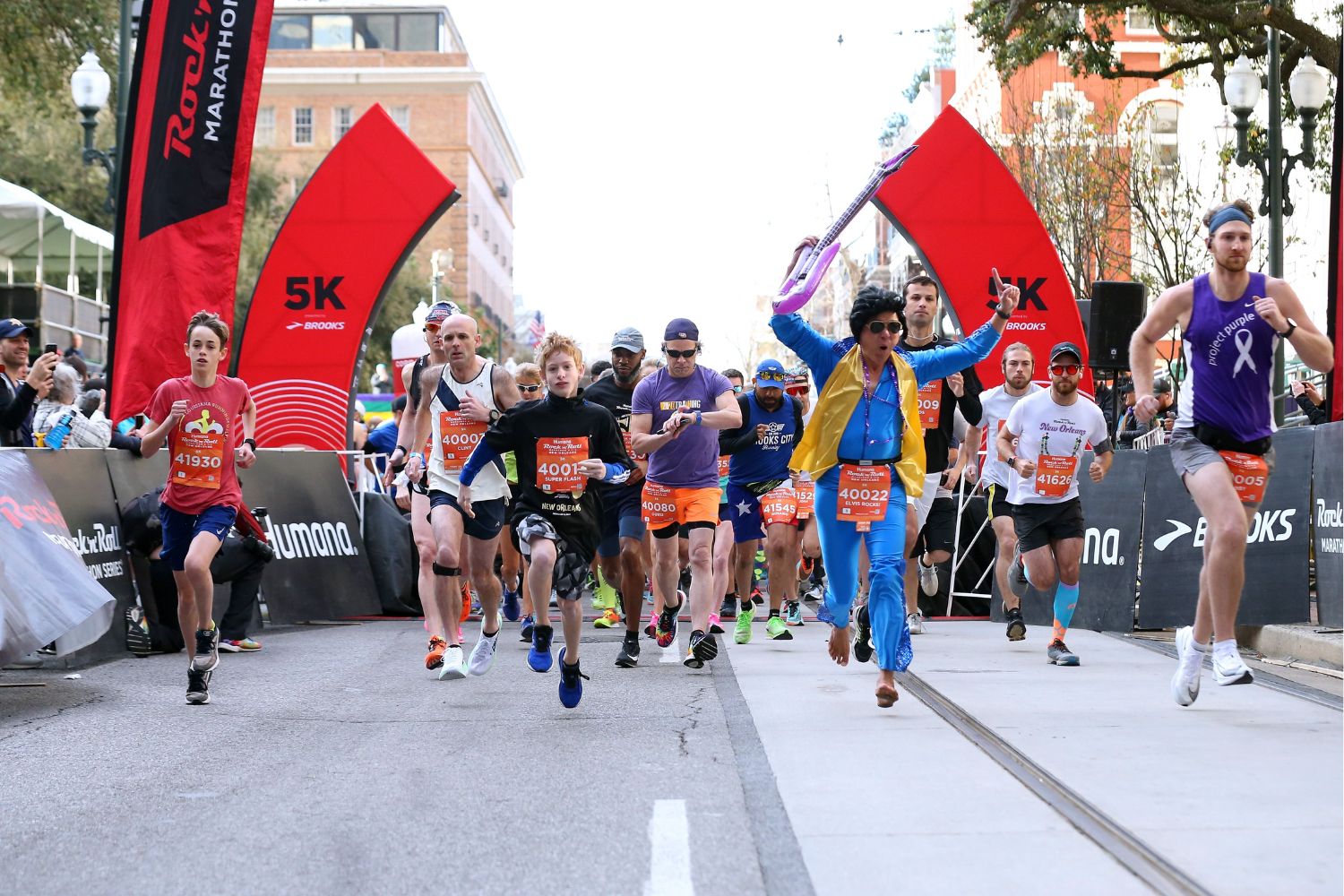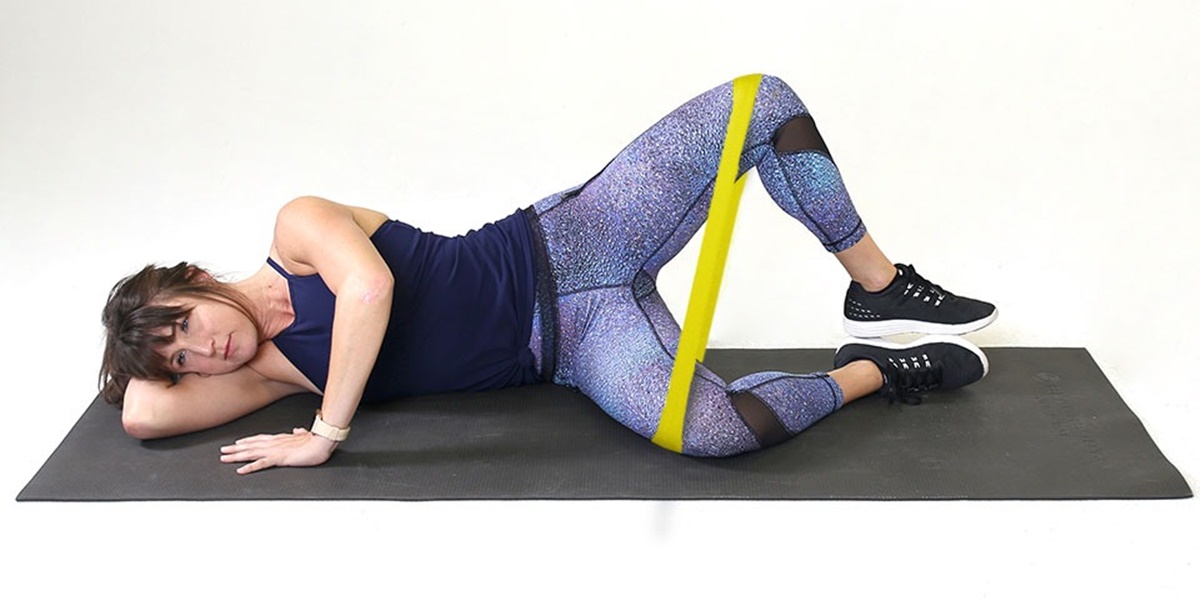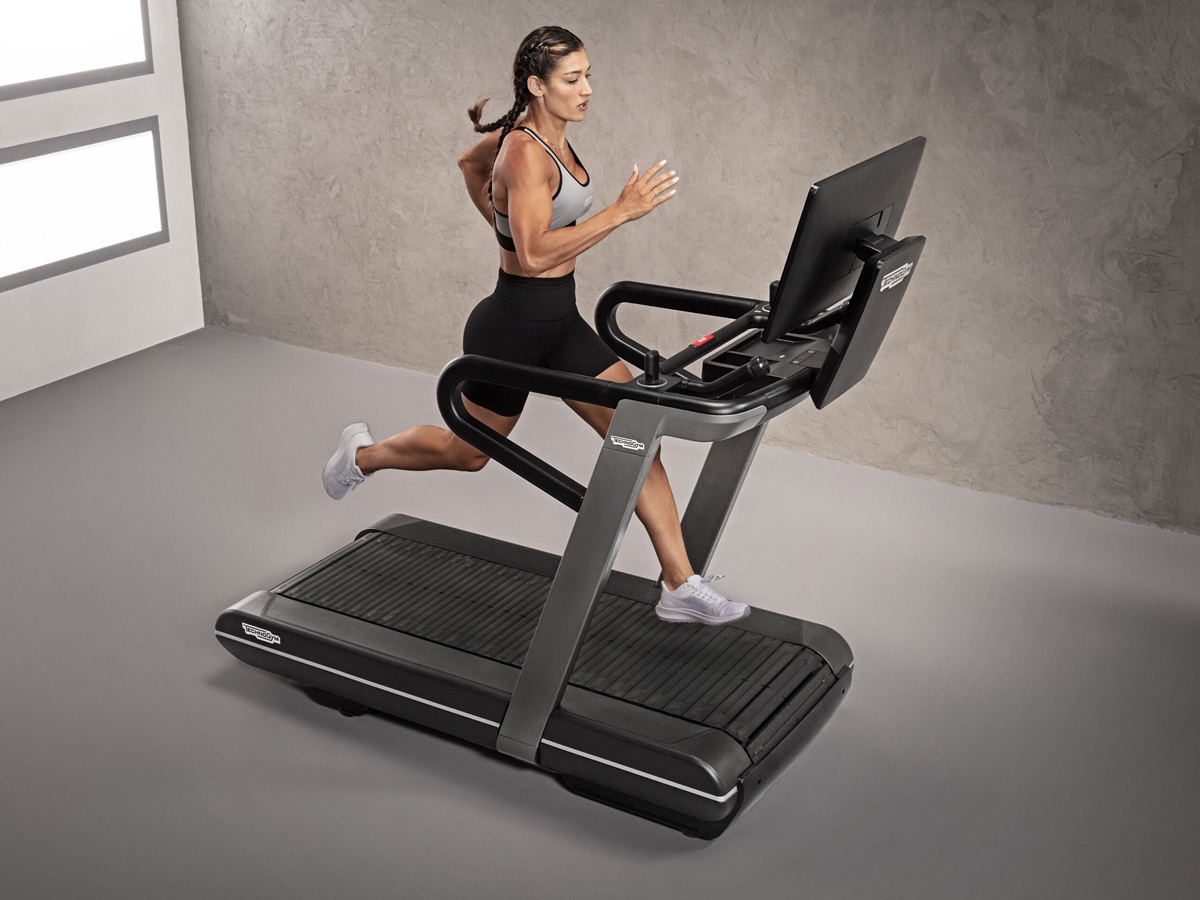Home>Misc>Featured>How Do I Know If I Have Good Running Form


Featured
How Do I Know If I Have Good Running Form
Modified: January 22, 2024
Learn how to determine if you have good running form and improve your technique. Get featured tips from experts to boost your performance.
Introduction
Running is a popular form of exercise that provides numerous health benefits, from improving cardiovascular fitness to boosting mental well-being. Whether you’re a seasoned runner or just starting out, having good running form is essential for maximizing efficiency, preventing injuries, and enhancing performance. But how do you know if you have good running form?
In this article, we will explore the importance of good running form, common signs of good and poor running form, tips for assessing and improving your form, and ultimately, how it can positively impact your running experience.
Having good running form not only helps you run more efficiently but also reduces the risk of injuries. When you run with proper form, you engage the right muscles in the right sequence, allowing for a smoother and more effortless stride. This places less stress on your joints, which can lead to a decreased risk of overuse injuries.
Another advantage of good running form is improved performance. Efficient running mechanics can optimize your energy expenditure, allowing you to run faster and longer without excessive fatigue. It can also enhance your running economy, which is the amount of oxygen you need to maintain a certain pace. With better form, you’ll be able to cover more distance with less effort.
Now that we understand the importance of good running form, let’s dive into some common signs that indicate whether your form is on point or needs improvement.
Importance of Good Running Form
Having good running form is crucial for several reasons. It not only enhances performance but also reduces the risk of injuries and promotes better running efficiency. Let’s delve deeper into the importance of maintaining proper form while running.
1. Injury Prevention: Running with poor form can put excessive strain on your muscles, tendons, and joints, making you more susceptible to injuries. By having good running form, you can minimize the impact on your body and decrease the risk of common running-related injuries, such as shin splints, IT band syndrome, and plantar fasciitis.
2. Enhanced Efficiency: Proper running mechanics ensure that you’re utilizing your energy in the most efficient way possible. When you have good form, you engage the appropriate muscles and distribute the workload evenly, allowing for a more balanced and efficient stride. This can result in increased speed, better endurance, and overall improved running economy.
3. Improved Performance: Your running form plays a significant role in determining your performance outcomes. Good form enables you to maintain a steady pace, optimize your stride length, and improve your biomechanical efficiency. As a result, you can run faster and longer without expending unnecessary energy, leading to better race times and achieving your running goals.
4. Better Body Alignment: Proper running form helps you maintain optimal body alignment throughout your run. By aligning your head, shoulders, hips, and feet in the correct position, you can distribute the impact of each step evenly and reduce stress on any specific muscle group or joint. This alignment also allows for better posture, which can have a positive impact on your overall running mechanics.
5. Injury Rehabilitation: If you have suffered from a running-related injury in the past, correcting your running form can aid in your rehabilitation process. By addressing any biomechanical issues and ensuring proper alignment, you can minimize the risk of re-injury and gradually build your strength and endurance.
In summary, maintaining good running form not only helps prevent injuries but also improves running efficiency and performance. It promotes proper body alignment, minimizes strain on your muscles and joints, and ensures that you’re utilizing your energy in the most efficient way possible. By prioritizing good running form, you can elevate your running experience and achieve your goals with less risk of setbacks or injuries.
Common Signs of Good Running Form
Recognizing the signs of good running form is essential for evaluating your technique and making improvements. While everyone may have slight variations due to individual differences, here are some key indicators of proper running form:
1. Upright Posture: Good running form entails maintaining an upright posture throughout your run. This means keeping your head aligned with your spine, avoiding excessive forward lean or slouching. By doing so, you allow for optimal lung capacity and efficient breathing.
2. Relaxed Shoulders and Arms: Your shoulders should be relaxed and down, not tensed or shrugged. Avoid crossing your arms across your chest and keep your elbows bent at approximately a 90-degree angle. Maintaining a slight arm swing from the shoulders, but not excessive or crossing the midline, helps with balance and momentum.
3. Balanced Stride: Strive for a balanced and efficient stride. This means landing with a midfoot or forefoot strike under your center of gravity, rather than with your heel striking first. Additionally, your stride length should be comfortable and natural, neither too short nor too long. Too short of a stride can result in excessive vertical movement and wasted energy, while too long of a stride can lead to overstriding and increased risk of injury.
4. High Cadence: Cadence refers to the number of steps you take per minute. A higher cadence is generally associated with good running form. Aim for a cadence of around 180 steps per minute, as it promotes faster turnover and reduces ground contact time, leading to more efficient running.
5. Engaged Core: Your core plays a vital role in maintaining stability and proper running form. Keep your abdominal muscles engaged throughout your run, as this helps to stabilize your trunk and prevent excessive rotation or lateral movement.
6. Smooth and Efficient Forward Motion: Good running form should exhibit a smooth forward motion, without excessive bouncing or twisting. Focus on moving forward in a straight line, rather than wasting energy on unnecessary lateral or vertical movements.
7. Consistent Breathing: Efficient running form is characterized by consistent and controlled breathing. Avoid shallow or erratic breaths and aim for deep belly breathing, which maximizes the intake of oxygen and helps with relaxation and endurance.
By observing and practicing these signs of good running form, you can enhance your running efficiency and reduce the risk of injuries. Remember, it takes time and practice to develop proper technique, so be patient with yourself as you work on improving your form.
Signs of Poor Running Form
Identifying signs of poor running form is crucial for making adjustments and avoiding potential injuries. Here are some common indicators that your running form may need improvement:
1. Slouching or Rounded Shoulders: Poor posture, such as slouching or rounded shoulders, can disrupt your running mechanics. It can lead to decreased lung capacity, limit your range of motion, and cause unnecessary strain on your neck and back.
2. Excessive Forward Lean: Leaning too far forward from your hips can put excessive strain on your lower back and hamstrings. It can also disrupt your balance and lead to a less efficient stride.
3. Heel Striking: Landing with your heel striking the ground first rather than a midfoot or forefoot strike is a common sign of poor running form. Heel striking can lead to excessive impact and increase the risk of injuries, such as shin splints and knee pain.
4. Overstriding or Understriding: Overstriding occurs when your stride length is too long, resulting in a braking effect and increased stress on your joints. Understriding, on the other hand, can indicate a lack of power and efficiency in your stride. Both can lead to reduced speed and increased risk of injuries.
5. Cross-Arming: Crossing your arms across your chest while running can throw off your balance and limit your arm swing, which plays a crucial role in generating momentum and coordinating your stride.
6. Excessive Bouncing: A bouncy running style, with excessive vertical movement, indicates energy wastage and a lack of efficiency. Aim for a smooth and controlled forward motion, minimizing unnecessary up-and-down movement.
7. Lack of Core Engagement: A weak or disengaged core can negatively impact your running form. It can limit stability and increase the likelihood of excessive torso rotation and lateral movement.
8. Inconsistent Breathing: Erratic or shallow breathing can indicate poor running form. It may signify that you are tensed or not utilizing your diaphragm properly. Consistent and controlled breathing is essential for efficient oxygen intake and endurance.
Recognizing these signs of poor running form is the first step toward improving your technique and preventing injuries. If you notice any of these indicators, it’s important to focus on making the necessary adjustments to promote a more efficient and safer running experience.
Assessing Your Running Form
To improve your running form, it’s essential to assess your current technique and identify areas that need improvement. Here are some methods you can use to assess your running form:
1. Self-Reflection: Find a quiet and flat location to observe your running form. Record yourself running on a treadmill or ask a friend to record you running outdoors. Analyze your posture, foot strike, arm position, and overall body alignment. Take note of any signs of poor form mentioned earlier.
2. Video Analysis: Consider working with a running coach or biomechanics specialist who can analyze your running form using slow-motion video analysis. They can provide objective feedback, pinpoint areas for improvement, and offer specific drills or exercises to address any concerns.
3. Professional Gait Analysis: Schedule a professional gait analysis with a running specialty store or a sports performance lab. They often use advanced technology, such as pressure sensors and motion capture systems, to provide a comprehensive assessment of your running mechanics.
4. Treadmill Analysis: Running on a treadmill can help you focus on your form without distractions. Pay attention to your posture, arm swing, foot strike, and stride length. Experiment with small adjustments to see how they impact your running efficiency.
5. Biomechanical Assessment: Consider consulting with a physical therapist or sports physician who can assess your overall biomechanics. They can identify any specific weaknesses or imbalances that may be affecting your running form and recommend targeted exercises or stretches to address them.
6. Running Form Drills: Incorporate specific running form drills into your training routine. These exercises target different aspects of your form, such as cadence, foot strike, and posture. Examples include high knees, heel-to-butt kicks, and butt kicks.
7. Listen to Your Body: Pay attention to how your body feels during and after running. Do you experience pain or discomfort in specific areas? These sensations can provide valuable insights into potential form issues that may need to be addressed.
Remember that improving your running form is a gradual process. It takes time and practice to make significant changes. Focus on one aspect at a time and gradually integrate adjustments into your running routine. Regular self-assessments and feedback from professionals can help you track progress and ensure you’re on the right path to better running form.
Tips for Improving Running Form
Improving your running form can lead to greater efficiency, reduced risk of injuries, and enhanced performance. Here are some tips to help you enhance your running technique:
1. Start with a Strong Foundation: Develop a strong core and overall body strength through regular cross-training exercises, such as strength training and core workouts. A strong foundation will support proper alignment and stability during your runs.
2. Work on Your Posture: Focus on maintaining an upright posture while running. Keep your head aligned with your spine, avoid excessive leaning forward or slouching, and engage your core muscles to support proper alignment.
3. Gradually Increase Cadence: Aim for a higher cadence of around 180 steps per minute. Increase your cadence gradually to avoid overstriding and compromising your form. Short, quick strides can lead to improved efficiency and reduced risk of injuries.
4. Landing and Footstrike: Strive for a midfoot or forefoot landing rather than a heel strike. This helps to promote a more efficient transfer of energy, reduces impact, and lessens the load on your joints.
5. Improve Arm Swing: Maintain a relaxed arm position with a slight bend in the elbows. Allow your arms to swing naturally from the shoulders, driving forward and backward to help with balance and momentum.
6. Focus on Breathing: Practice controlled and rhythmic breathing to enhance your oxygen intake and reduce tension. Breathe deeply from your diaphragm and try to match your breath with your stride pattern.
7. Incorporate Mobility and Flexibility Exercises: Flexibility and mobility are key for a fluid running form. Implement a routine that includes exercises like dynamic stretching, foam rolling, and yoga to improve joint range of motion and flexibility in your muscles.
8. Gradual Progression: Avoid making drastic changes to your running form all at once. Instead, implement changes gradually and give your body time to adjust. This will allow your muscles, tendons, and joints to adapt to the new mechanics and reduce the risk of overuse injuries.
9. Mindfulness and Body Awareness: Stay mindful during your runs and pay attention to your body. Notice any tension or areas of discomfort. Regularly checking in with yourself can help you make adjustments and maintain good form throughout your run.
10. Seek Professional Help: Consider working with a running coach, physical therapist, or biomechanics specialist. They can provide personalized guidance, analyze your form, and offer specific drills or exercises to address your unique needs and improve your running technique.
Remember, improving your running form is a continual process. Stay patient, remain consistent with your practice, and listen to your body. By focusing on these tips, you can gradually enhance your running form and optimize your performance while minimizing the risk of injuries.
Conclusion
Having good running form is essential for anyone looking to optimize their running experience. It not only enhances performance but also reduces the risk of injuries and promotes efficient movement. By maintaining proper posture, engaging the right muscles, and focusing on key elements of running technique, you can greatly improve your form and overall running efficiency.
Throughout this article, we explored the importance of good running form and highlighted common signs of both good and poor form. We also discussed various methods for assessing your running form, from self-reflection and video analysis to professional gait analysis and biomechanical assessment. Additionally, we provided tips for improving your running form, including strengthening your core, focusing on posture, increasing cadence, and paying attention to your footstrike and arm swing.
It’s important to remember that improving running form is a gradual process that requires patience and practice. Progress may not happen overnight, but with consistency and dedication, you can make significant improvements to your technique. Remember to listen to your body, seek professional guidance if needed, and focus on gradual progression to avoid overuse injuries.
So, whether you’re a casual runner or a competitive athlete, invest time and effort in developing and maintaining good running form. Not only will it help you become a more efficient runner, but it will also contribute to your overall enjoyment and long-term sustainability in the sport.
Keep striving for proper form, and watch as your running performance and enjoyment of the sport reach new heights!









